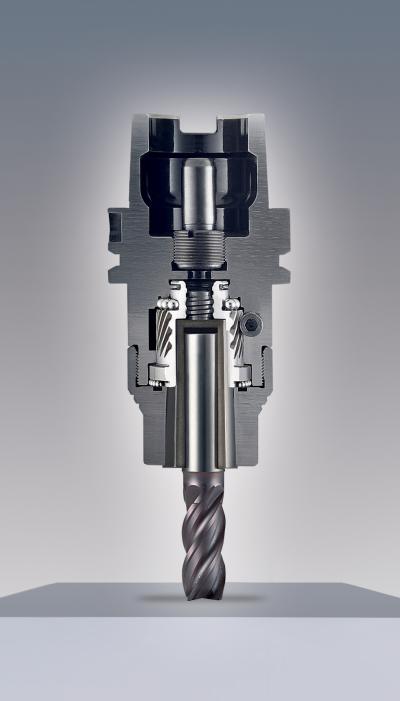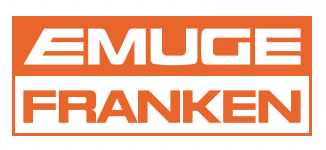
Emuge Corp., in partnership with Albrecht Precision Chucks, has introduced Emuge FPC mill/drill chucks that reportedly provide unprecedented rigidity, vibration damping, concentricity, machining speed and tool life versus conventional chuck technologies for milling and drilling applications.
Featuring a chuck with a 1:16 worm gear, Emuge FPC chuck's patented design delivers 3 tons of traction force. The unique design and body provide 100 percent holding power for maximum rigidity, and the collet-cone assembly absorbs virtually all vibration for maximum damping.
Unique features and advantages include:
Extremely high transferable torque that provides maximum process reliability. Transferred torque on a tool shank diameter of 20mm is 400 Nm.
Increased accuracy with a 3 times diameter tool length, concentricity is less than 3 µm to guarantee long tool life and quality workpiece surface finishes.
Chuck is mechanical drive-actuated with a hex wrench; a simple design that enables quick tool change in seconds.
Special holder design reduces vibration that dramatically improves workpiece surface finishes and provides exceptionally long tool life.
For maximum safety, the strongest clamping force to prevent the possibility of pullout.
In a speed comparison with four chuck technologies, using a 20 mm endmill in the same material, the Emuge FPC Chuck enabled the feed rate to be increased by 30 performance with no loss in performance.
Emuge FPC Chucks are available in four shank styles (CAT, HSK-A, SK and BT) in 47 different SKUs for a range of applications. A full range of high precision collets and accessories are also available for the FPC line. Emuge FPC Collets are available in three size ranges (FPC 14, FPC 20 and FPC 25) in over 35 different SKUs, from 1/8" to 1¼" and in metric from 2 mm to 32 mm.
Contact Details
Related Glossary Terms
- chuck
chuck
Workholding device that affixes to a mill, lathe or drill-press spindle. It holds a tool or workpiece by one end, allowing it to be rotated. May also be fitted to the machine table to hold a workpiece. Two or more adjustable jaws actually hold the tool or part. May be actuated manually, pneumatically, hydraulically or electrically. See collet.
- endmill
endmill
Milling cutter held by its shank that cuts on its periphery and, if so configured, on its free end. Takes a variety of shapes (single- and double-end, roughing, ballnose and cup-end) and sizes (stub, medium, long and extra-long). Also comes with differing numbers of flutes.
- feed
feed
Rate of change of position of the tool as a whole, relative to the workpiece while cutting.
- gang cutting ( milling)
gang cutting ( milling)
Machining with several cutters mounted on a single arbor, generally for simultaneous cutting.
- milling
milling
Machining operation in which metal or other material is removed by applying power to a rotating cutter. In vertical milling, the cutting tool is mounted vertically on the spindle. In horizontal milling, the cutting tool is mounted horizontally, either directly on the spindle or on an arbor. Horizontal milling is further broken down into conventional milling, where the cutter rotates opposite the direction of feed, or “up” into the workpiece; and climb milling, where the cutter rotates in the direction of feed, or “down” into the workpiece. Milling operations include plane or surface milling, endmilling, facemilling, angle milling, form milling and profiling.
- shank
shank
Main body of a tool; the portion of a drill or similar end-held tool that fits into a collet, chuck or similar mounting device.

